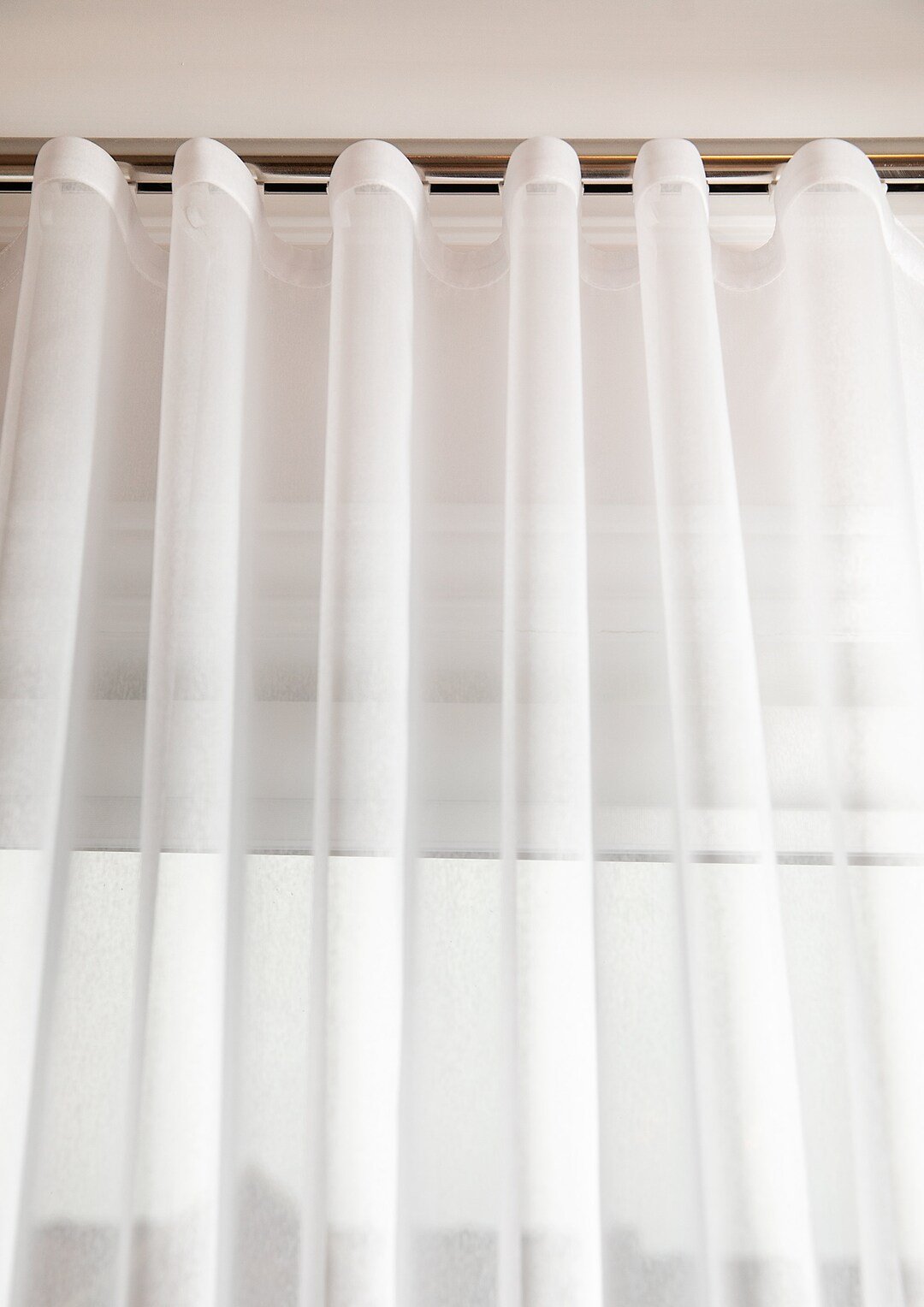Drapery Series: Styles
Welcome back to all things drapery with FID! (If you missed our first blog about finding the perfect fabric read it here.) Today we’re diving in to all the different styles of drapery (well, maybe not all but the basics and a couple of our favorites). We are talking drapery panels here, not valances or fabric roman blinds. That is a discussion for a different day.
Before we even start, here is your first designer tip: fullness is key to making any style look custom. Fullness of the drapery is achieved by the amount of fabric used. A simple rule of thumb is that a drapery panel is one and a half to two times the width of the area it is meant to cover. In saying this, the amount of fabric needed to achieve a full look depends on the style of panel you end up choosing.
Pleated
The word “pleated” in the design world can mean MANY different styles. Since we could go on for days about different pleats, we’ll keep it to just three for our reader’s sake. Our top three are: pinch, reverse box and tailored.
Pinch Pleat
When it comes to a pinch pleat, pleats are gathered in the front of the drapery, usually in two’s or three’s. Being one of the most popular pleat style, these work in both casual spaces as well as fully traditional style rooms. Pleated drapery usually requires the most amount of fabric to achieve maximum fullness. If you choose a double pleat you need twice the amount of fabric as a regular flat panel drapery and if you choose a triple pleat you need three times the amount of fabric.
Reverse Box Pleat
These pleats contain the fullness of the pleat to the backside of the panel, and keep a flat surface on the front. A choice for both traditional and contemporary designs, with it’s clean lines and “no-fuss” hidden pleats. This type of drapery panel usually uses up twice the amount of fabric as a compared to a flat panel drape.
Tailored Pleat
A blend of contemporary and traditional, tailored pleats are gathered at the very top of the fabric. The construction of this pleat makes it one of the easiest to operate, ideal for areas where the drapes will be used everyday, like a bedroom. These types of drapery panels usually have a hidden hook on the back that inserts into a ring, which glides nicely on your drapery rod.
Rod pocket
Rod pocket drapery panels function just as it sounds like they do, there is a sewn “pocket” at the top of the drape for the curtain rod to slide through. Moving fabric along the curtain rod can be difficult with this style, so we recommend using it for sheer and light weight fabrics only. The wider the drapery panel is, the richer the rod pocket will gather, achieving a more custom look and feel to your drapery panels. This type of drapery panel is best suited for stationary panels, that don’t get opened and closed on a daily basis.
Hidden Tab
Hidden tab drapes have tabs or loops sewn onto the back of the curtain header. The rod slips through the tab so that neither is visible from the front. This gives the illusion of the curtain floating in space and creates an elegant, clean line. These panels sit nicely on a rod and hang easily at the top creating a nicely pooled and gathered effect.
Ripple Fold
Used mainly in commercial spaces but it is becoming popular in modern and contemporary design. This drapery style is constructed by a single panel of fabric which is rippled in an “s” shape and the snaps are then clipped onto a tape and clip system that is easily hidden into a concealed rod. These drapes slide with ease, normally with a baton wand, and they look clean and fresh in any space.
Grommet
Grommet drapes feature metal open rings along the top of the panels that allow them to slide along a rod easily. The grommets are pressed tightly together on each side of your drapery panel and can come in a variety of sizes and colors to compliment your decor. We always suggest having a large grommet on your panel so that the grommets slide nicely on the rod, if the grommet is too small for the size of your rod, it will catch on the rod and not slide with ease. Their easy operation makes them the perfect choice for drapery panels that you want to open and close regularly.
When selecting the style of your drapes there are a few things to keep in mind. Knowing what fabric you want to use and how it will drape, if they’re going in to a room where they will be used daily, will they be lined or unlined and of course what style matches your taste. Have fun choosing your fabric and your drapery style, and if you are ever lost on what to choose we are always here to help you.
We have one last step on your journey to creating your dream drapes - hardware. Our next blog in the series will take you through all the options of hardware and our tips on drapery installation.
Happy Thursday!








